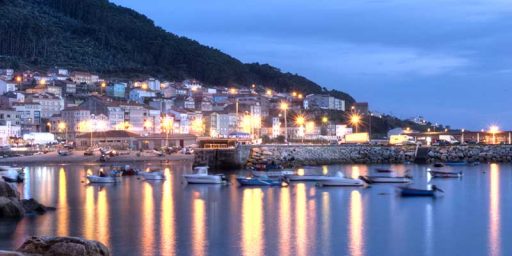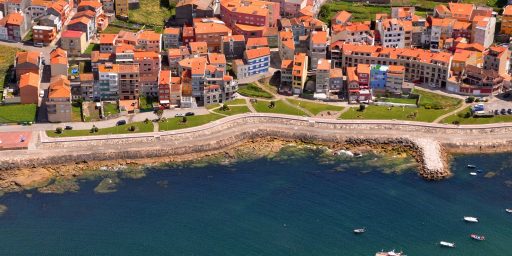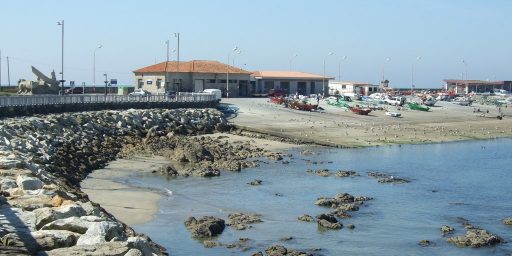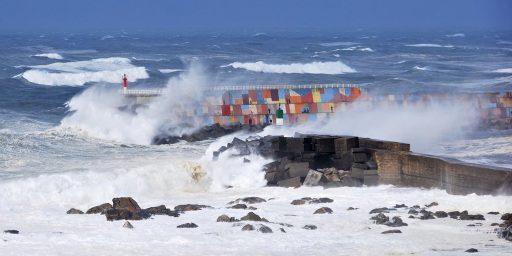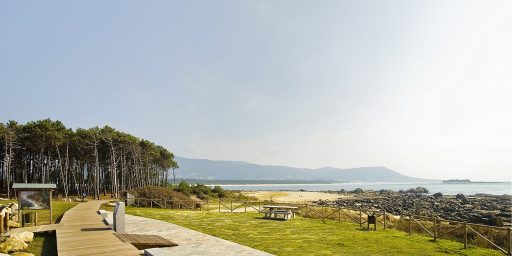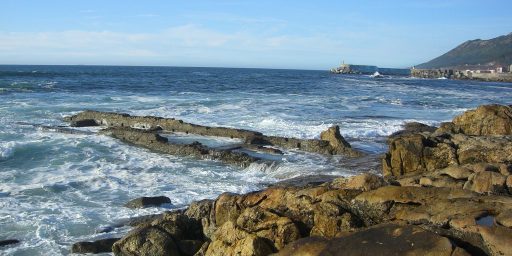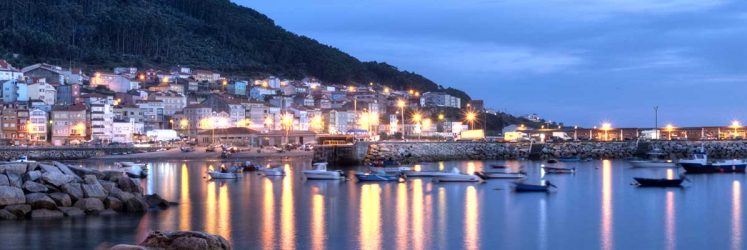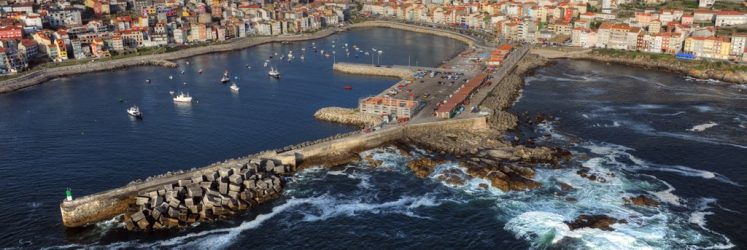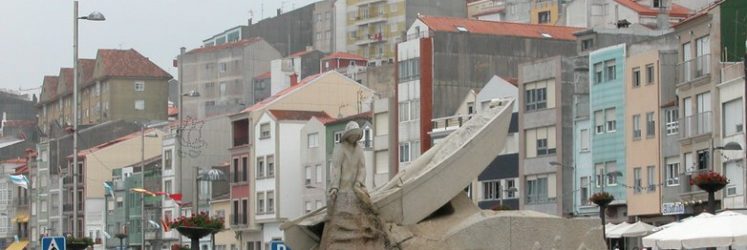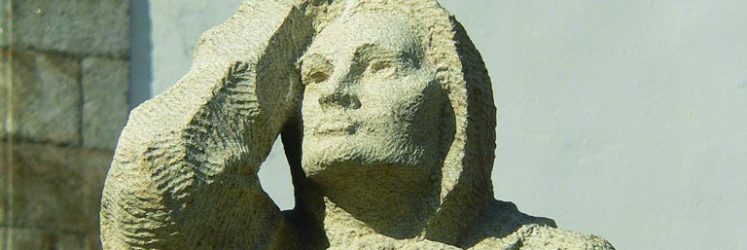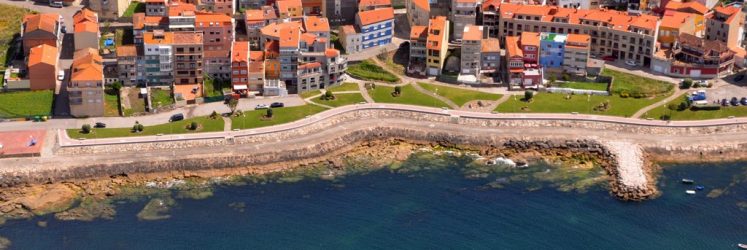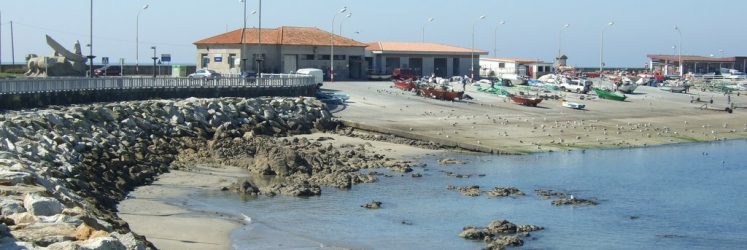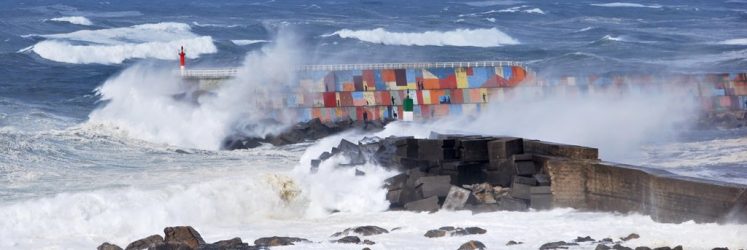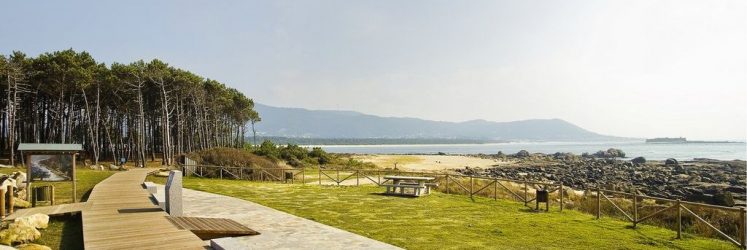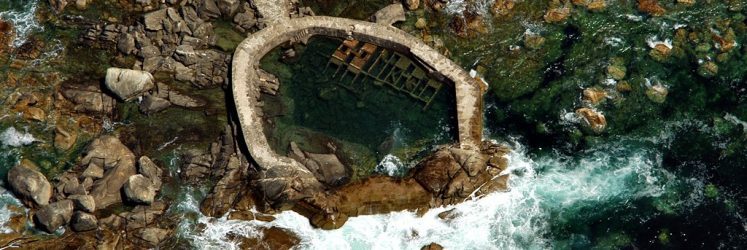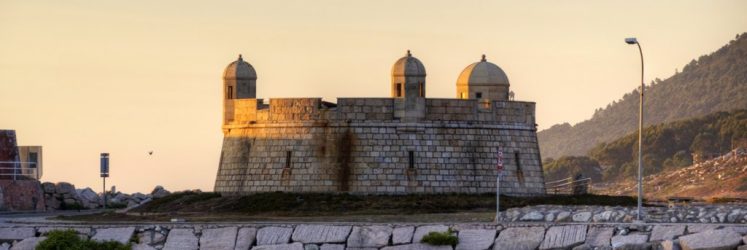Seaport
FISHING PORT
It is pretty characteristic of the seaport of A Guarda the typical seafaring people houses that are very narrow, with different floors and surprisingly colourfully, with the docks create one of the liveliest meeting points of the town, thanks to the seafront promenade, terraces and restaurants that welcome the locals and visitors.
MONUMENTS
In the street of the port and a few steps from the dock has located this monument made by José Antuñez Pousa in 1991. Emphasises the hardness of the fishermen job in A Guarda and also pay tribute to the complementary and necessary labour carried out by the women, as is the making and maintenance of the fishing nets.
Placed in the ancient Ribera (shore) a few metres of the Malteses Street and the middle of a garden. This Magín Picallo work of 2004 is a tribute to the sorrow of the women when a loved one has lost the life in the sea. It portrays the feelings accompanying the sea-faring women of solitude and uncertainty.
MALTESES STREET & PROMENADE
The most representative sea-faring lane, narrow and with the tight houses over the sea. The traditional road goes parallel to the boardwalk, this esplanade was built up above the rocks, and it has gardens and leisure facilities. At the end of the Promenade, you can find the Atalaia (watchtower), – that houses the Museum of the Sea -, and the modern dock. This dock shelters the port of the force of the roughness of the sea in winter. Its surface makes up an enormous painting wall which reflects the colours and shapes of the typical sea-faring people houses and the social life of A Guarda, becoming another interesting point.
FISH MARKET AND FISHERMEN ASSOCIATION
The fishing labour is very rooted in A Guarda and is still one of the primary sources of income. Besides the inshore fishing nowadays the deep-sea fishing has become very relevant. The swordfish fleet from A Guarda is one of the most important of Spain. The fish market is located in the harbour and has the opened doors the working days at 4 pm to see the captures: octopus, sea bass, hake, skate, haddock, sole and barnacle are some of the principal fishes and shellfishes caught, depends on the season. Currently, the auction is electronic but can take part the accredited professionals, even though it is still a privilege having in front such a fresh product and can observe how these professionals act during the auction, in an absolute and very interesting silence. The Santa Trega Fishermen Association manages the fish market and the fishing licenses, both the recreational and the professional.
If you want to request for a license, you can contact them by phone: 986 61 03 07 or e-mail: cofradia@cofradiaguarda.org
ATLANTIC COAST
The Atlantic coastal in A Guarda stands out by the bravery and strength that left a mark in generations of sailors and their families. This rocky waterfront makes up an unusual type in the Galician coast, and this is because is rectilinear, with few elevations of the terrain and with no cliffs. On the windy areas can be found the remains of the windmills built in the 18th century. This kind of mills was quite usual in all of the Atlantic open sea coast. An excellent way to know the beauty of the coastline of A Guarda is going for a walk by the two routes beginning in the seaport. Towards the South the Littoral Walkway, and towards the North the Route of the Cetareas (shellfish farms), both will let us know the coast physiognomy and enjoy the hardness of the sea in winter.
THE LITTORAL WALKWAY
This footpath allows to go over the coastline of A Guarda from the seaport to the mouth of the Miño river; it ends at the O Muíño (the mill) beach. It is pedestrian on its 3.6 kilometres and also suitable for bicycles. This walkway permits to enjoy the coastal beauty and the sea magnificence thanks to a comfortable and pleasant walk. The whole route is part of a blue path that connects the sea beach Area Grande and the river beach O Muíño, both awarded with the Blue Flag. In the middle of the walkway, the wood pathway elevates to avoid altering the Seixal, this name is because of the “seixos” (stones rounded by tumbling, pebbles) given their shape by the come and go of the waves. Until recently they were used to diverse purposes such as fishing weights, decorative objects, etc., for that reason we were losing this singular place, for that reason currently is utterly forbidden to take “seixos” with you under no circumstance. On one side and another of the wood pathway still linger the remains, recently excavated, of an important Roman “salina” (saltern pond).
THE CETAREAS ROUTE
This walking route begins in the north part of the seaport, bordering the shore almost until the boundary with O Rosal. It shares the first 500 metres with the Littoral Walkway, and in Agrelo zone we find the first informative panel of the Cetareas Route.
The cetareas are shellfish hatcheries, ancient stone structures in the intertidal zone that keep the shellfish alive to its subsequent sale. A Guarda gained a noticeable prestige by trading high-quality seafood, and this recognition evolved in the expression of an engaging cuisine in which the fishes and shellfishes highlight absolutely.
This walking route started up by the Fishermen Association and the Council, permitted to recover and put on the spot these antique hatcheries. Along with this route of 4.6 kilometres, we can know the ruins of the 4 “cetareas” that we still keep. Even with the high tide can be visited the biggest one, the Cetarea Redonda (round cetarea) o Pepe Sobrino’s, after the pass by the beach Area Grande towards the north.
MUSEUM OF THE SEA
The sea-faring past of A Guarda, based on the traditional inshore fishing, brought about a rich heritage, both tangible and intangible. The built heritage can be observed in the architecture and the seafaring district planning, in the maritime façade of the port too, but mostly it can be contemplated in the Museum of the Sea, housed in the Atalaia (watchtower) at the end of the promenade.








